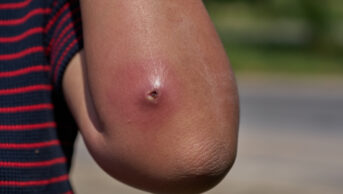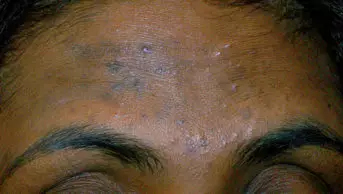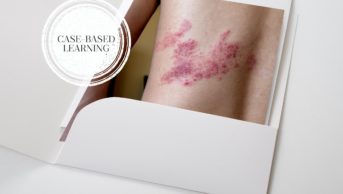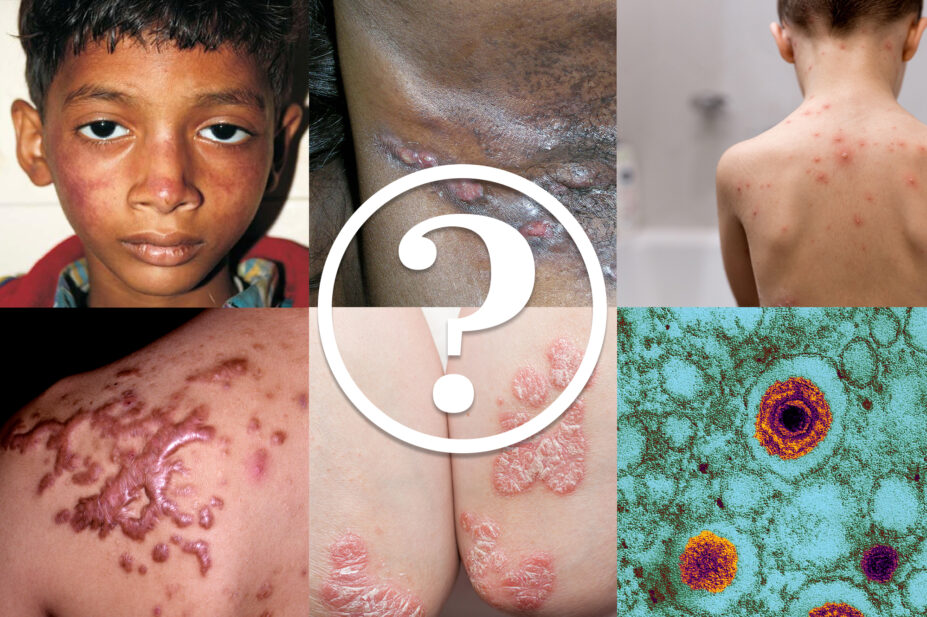
Dermatology presentations are common in primary care, with one in four people in England and Wales visiting their GP about a dermatological condition each year. Several relevant conditions — including impetigo and chickenpox — are included in minor ailment services across the UK. Pharmacists should be able to recognise these conditions and contribute to their management where appropriate.
Work your way through the quiz by expanding the questions in the boxes below.
Each question includes a link to a relevant article published in The Pharmaceutical Journal, which provides more information on the topic. When you have answered all the questions, select ‘Finish quiz’ at the bottom of the page to check your score.
Quiz Summary
0 of 15 Questions completed
Questions:
Information
You have already completed the quiz before. Hence you can not start it again.
Quiz is loading...
You must sign in or sign up to start the quiz.
You must first complete the following:
Results
Results
0 of 15 Questions answered correctly
Your time:
Time has elapsed
You have reached 0 of 0 point(s), (0)
Earned Point(s): 0 of 0, (0)
0 Essay(s) Pending (Possible Point(s): 0)
Categories
- Not categorized 0%
- 1
- 2
- 3
- 4
- 5
- 6
- 7
- 8
- 9
- 10
- 11
- 12
- 13
- 14
- 15
- Current
- Review
- Answered
- Correct
- Incorrect
- Question 1 of 15
1. Question
Which of these images depicts hives (urticaria)?
CorrectIncorrect - Question 2 of 15
2. Question
Which virus causes slapped cheek syndrome?
CorrectIncorrect - Question 3 of 15
3. Question
Fill in the blanks using the following words: women, men, more, less, one-third, half
Studies have found that are three times more likely than to be diagnosed with hidradenitis suppurative in European and North America. It is common in people with darker skin pigmentation. There also appears to be a genetic link — family history is reported in around of patients.
CorrectIncorrect - Question 4 of 15
4. Question
Match the type of epidermolysis bullosa (EB) with its frequency:
Sort elements
- Accounts for around 70% of EB cases
- Accounts for around 20% of EB cases
- Accounts for around 10% of EB cases
- Worldwide, around 250 cases have been described since the condition was first identified
- Epidermolysis bullosa simplex
- Dystrophic epidermolysis bullosa
- Junctional epidermolysis bullosa
- Kindler syndrome
CorrectIncorrect - Question 5 of 15
5. Question
Match the antibiotic with its place in cellulitis therapy
Sort elements
- Flucloxacillin (five to seven days)
- Clarithromycin (five to seven days)
- Co-amoxiclav (seven days)
- Cefuroxime (seven days)
- First choice
- Alternative first choice
- First-choice antibiotic if infection is near the eyes or nose
- Alternative choice antibiotics for severe infection
CorrectIncorrect - Question 6 of 15
6. Question
Which skin infection is depicted in the image?
CorrectIncorrect - Question 7 of 15
7. Question
Which condition can be recognised by its characteristic 'bullseye' rash, shown in the image?
CorrectIncorrect - Question 8 of 15
8. Question
Which of the following points are not advised as self-care measures for children with chickenpox? More than one answer may be correct
CorrectIncorrect - Question 9 of 15
9. Question
Which of the following factors may cause delayed wound healing? More than one answer may be correct
CorrectIncorrect - Question 10 of 15
10. Question
What is the most commonly used treatment for keloid scars?
CorrectIncorrect - Question 11 of 15
11. Question
Fill in the blanks using three of the following options: first, second, immunological, biological, arthritis, fibromyalgia
The precise cause of psoriasis remains unclear, but it is likely that a combination of genetic, environmental and immunological factors is responsible. The condition is present up to 30% of -degree relatives of affected individuals. The immunological component of the condition was realised in the late 1980s, when patients with psoriatic were treated with the agent etanercept — a tumour necrosis factor (TNF)-alpha inhibitor.
CorrectIncorrect - Question 12 of 15
12. Question
What scale is used to describe skin according to its reaction to sun exposure?
CorrectIncorrect - Question 13 of 15
13. Question
A patient of Indian descent is looking for advice on dark brown patches that have appeared on their knuckles. The patient describes a history of preceding inflammation and itching on the affected site. What is the most likely diagnosis?
CorrectIncorrect - Question 14 of 15
14. Question
Which of the following age ranges would be eligible for the zoster vaccine, which protects against shingles?
CorrectIncorrect - Question 15 of 15
15. Question
Match the aciclovir regimen with its place in genital herpes therapy:
Sort elements
- 400mg three times a day for five days
- 200mg five times a day for five days
- 400mg three times a day for three to five days
- First episode
- Alternative regimen
- Recurrent episodes
CorrectIncorrect
Question 1 is from ‘Rashes in children’. Please refer to the original article if you would like to learn more.
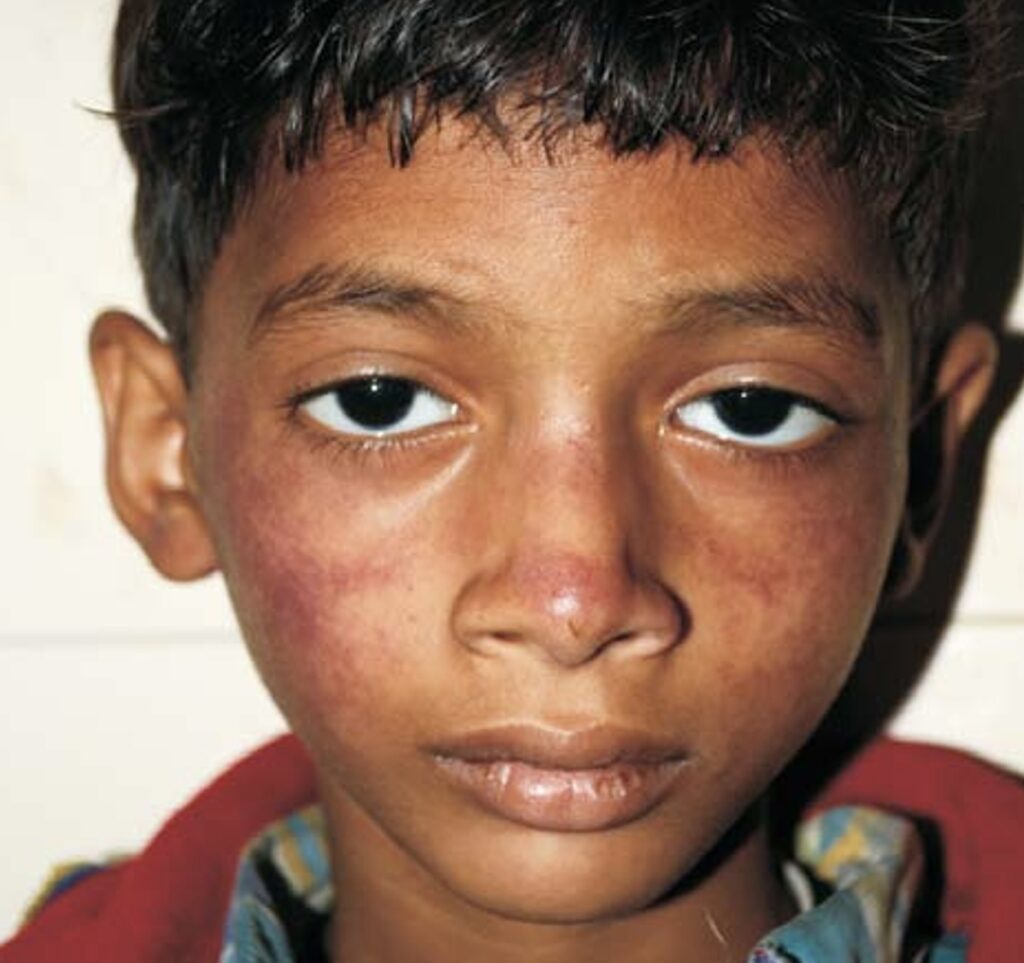
Indian Paediatrics (right – used with permission)
Quiz Summary
0 of 15 Questions completed
Questions:
Information
You have already completed the quiz before. Hence you can not start it again.
Quiz is loading...
You must sign in or sign up to start the quiz.
You must first complete the following:
Results
Results
0 of 15 Questions answered correctly
Your time:
Time has elapsed
You have reached 0 of 0 point(s), (0)
Earned Point(s): 0 of 0, (0)
0 Essay(s) Pending (Possible Point(s): 0)
Categories
- Not categorized 0%
- 1
- 2
- 3
- 4
- 5
- 6
- 7
- 8
- 9
- 10
- 11
- 12
- 13
- 14
- 15
- Current
- Review
- Answered
- Correct
- Incorrect
- Question 1 of 15
1. Question
Which of these images depicts hives (urticaria)?
CorrectIncorrect - Question 2 of 15
2. Question
Which virus causes slapped cheek syndrome?
CorrectIncorrect - Question 3 of 15
3. Question
Fill in the blanks using the following words: women, men, more, less, one-third, half
Studies have found that are three times more likely than to be diagnosed with hidradenitis suppurative in European and North America. It is common in people with darker skin pigmentation. There also appears to be a genetic link — family history is reported in around of patients.
CorrectIncorrect - Question 4 of 15
4. Question
Match the type of epidermolysis bullosa (EB) with its frequency:
Sort elements
- Accounts for around 70% of EB cases
- Accounts for around 20% of EB cases
- Accounts for around 10% of EB cases
- Worldwide, around 250 cases have been described since the condition was first identified
- Epidermolysis bullosa simplex
- Dystrophic epidermolysis bullosa
- Junctional epidermolysis bullosa
- Kindler syndrome
CorrectIncorrect - Question 5 of 15
5. Question
Match the antibiotic with its place in cellulitis therapy
Sort elements
- Flucloxacillin (five to seven days)
- Clarithromycin (five to seven days)
- Co-amoxiclav (seven days)
- Cefuroxime (seven days)
- First choice
- Alternative first choice
- First-choice antibiotic if infection is near the eyes or nose
- Alternative choice antibiotics for severe infection
CorrectIncorrect - Question 6 of 15
6. Question
Which skin infection is depicted in the image?
CorrectIncorrect - Question 7 of 15
7. Question
Which condition can be recognised by its characteristic 'bullseye' rash, shown in the image?
CorrectIncorrect - Question 8 of 15
8. Question
Which of the following points are not advised as self-care measures for children with chickenpox? More than one answer may be correct
CorrectIncorrect - Question 9 of 15
9. Question
Which of the following factors may cause delayed wound healing? More than one answer may be correct
CorrectIncorrect - Question 10 of 15
10. Question
What is the most commonly used treatment for keloid scars?
CorrectIncorrect - Question 11 of 15
11. Question
Fill in the blanks using three of the following options: first, second, immunological, biological, arthritis, fibromyalgia
The precise cause of psoriasis remains unclear, but it is likely that a combination of genetic, environmental and immunological factors is responsible. The condition is present up to 30% of -degree relatives of affected individuals. The immunological component of the condition was realised in the late 1980s, when patients with psoriatic were treated with the agent etanercept — a tumour necrosis factor (TNF)-alpha inhibitor.
CorrectIncorrect - Question 12 of 15
12. Question
What scale is used to describe skin according to its reaction to sun exposure?
CorrectIncorrect - Question 13 of 15
13. Question
A patient of Indian descent is looking for advice on dark brown patches that have appeared on their knuckles. The patient describes a history of preceding inflammation and itching on the affected site. What is the most likely diagnosis?
CorrectIncorrect - Question 14 of 15
14. Question
Which of the following age ranges would be eligible for the zoster vaccine, which protects against shingles?
CorrectIncorrect - Question 15 of 15
15. Question
Match the aciclovir regimen with its place in genital herpes therapy:
Sort elements
- 400mg three times a day for five days
- 200mg five times a day for five days
- 400mg three times a day for three to five days
- First episode
- Alternative regimen
- Recurrent episodes
CorrectIncorrect
Question 2 is from ‘Rashes in children’. Please refer to the original article if you would like to learn more.
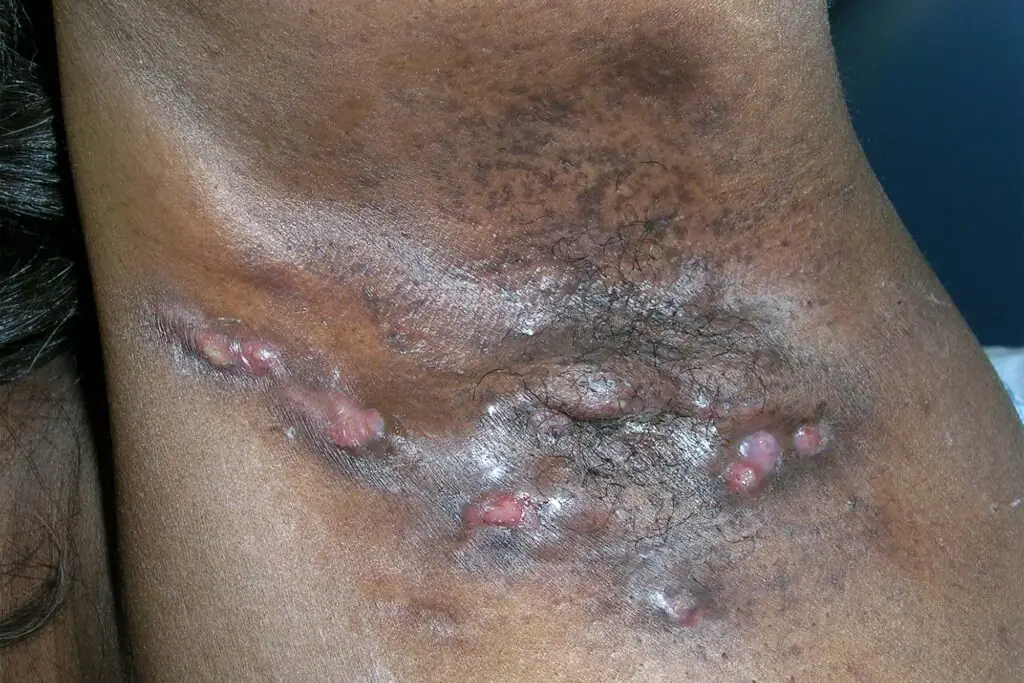
RICHARD USATINE MD / SCIENCE PHOTO LIBRARY
Quiz Summary
0 of 15 Questions completed
Questions:
Information
You have already completed the quiz before. Hence you can not start it again.
Quiz is loading...
You must sign in or sign up to start the quiz.
You must first complete the following:
Results
Results
0 of 15 Questions answered correctly
Your time:
Time has elapsed
You have reached 0 of 0 point(s), (0)
Earned Point(s): 0 of 0, (0)
0 Essay(s) Pending (Possible Point(s): 0)
Categories
- Not categorized 0%
- 1
- 2
- 3
- 4
- 5
- 6
- 7
- 8
- 9
- 10
- 11
- 12
- 13
- 14
- 15
- Current
- Review
- Answered
- Correct
- Incorrect
- Question 1 of 15
1. Question
Which of these images depicts hives (urticaria)?
CorrectIncorrect - Question 2 of 15
2. Question
Which virus causes slapped cheek syndrome?
CorrectIncorrect - Question 3 of 15
3. Question
Fill in the blanks using the following words: women, men, more, less, one-third, half
Studies have found that are three times more likely than to be diagnosed with hidradenitis suppurative in European and North America. It is common in people with darker skin pigmentation. There also appears to be a genetic link — family history is reported in around of patients.
CorrectIncorrect - Question 4 of 15
4. Question
Match the type of epidermolysis bullosa (EB) with its frequency:
Sort elements
- Accounts for around 70% of EB cases
- Accounts for around 20% of EB cases
- Accounts for around 10% of EB cases
- Worldwide, around 250 cases have been described since the condition was first identified
- Epidermolysis bullosa simplex
- Dystrophic epidermolysis bullosa
- Junctional epidermolysis bullosa
- Kindler syndrome
CorrectIncorrect - Question 5 of 15
5. Question
Match the antibiotic with its place in cellulitis therapy
Sort elements
- Flucloxacillin (five to seven days)
- Clarithromycin (five to seven days)
- Co-amoxiclav (seven days)
- Cefuroxime (seven days)
- First choice
- Alternative first choice
- First-choice antibiotic if infection is near the eyes or nose
- Alternative choice antibiotics for severe infection
CorrectIncorrect - Question 6 of 15
6. Question
Which skin infection is depicted in the image?
CorrectIncorrect - Question 7 of 15
7. Question
Which condition can be recognised by its characteristic 'bullseye' rash, shown in the image?
CorrectIncorrect - Question 8 of 15
8. Question
Which of the following points are not advised as self-care measures for children with chickenpox? More than one answer may be correct
CorrectIncorrect - Question 9 of 15
9. Question
Which of the following factors may cause delayed wound healing? More than one answer may be correct
CorrectIncorrect - Question 10 of 15
10. Question
What is the most commonly used treatment for keloid scars?
CorrectIncorrect - Question 11 of 15
11. Question
Fill in the blanks using three of the following options: first, second, immunological, biological, arthritis, fibromyalgia
The precise cause of psoriasis remains unclear, but it is likely that a combination of genetic, environmental and immunological factors is responsible. The condition is present up to 30% of -degree relatives of affected individuals. The immunological component of the condition was realised in the late 1980s, when patients with psoriatic were treated with the agent etanercept — a tumour necrosis factor (TNF)-alpha inhibitor.
CorrectIncorrect - Question 12 of 15
12. Question
What scale is used to describe skin according to its reaction to sun exposure?
CorrectIncorrect - Question 13 of 15
13. Question
A patient of Indian descent is looking for advice on dark brown patches that have appeared on their knuckles. The patient describes a history of preceding inflammation and itching on the affected site. What is the most likely diagnosis?
CorrectIncorrect - Question 14 of 15
14. Question
Which of the following age ranges would be eligible for the zoster vaccine, which protects against shingles?
CorrectIncorrect - Question 15 of 15
15. Question
Match the aciclovir regimen with its place in genital herpes therapy:
Sort elements
- 400mg three times a day for five days
- 200mg five times a day for five days
- 400mg three times a day for three to five days
- First episode
- Alternative regimen
- Recurrent episodes
CorrectIncorrect
Question 3 is from ‘Hidradenitis suppurativa: identification, symptoms and management’. Please refer to the original article if you would like to learn more.
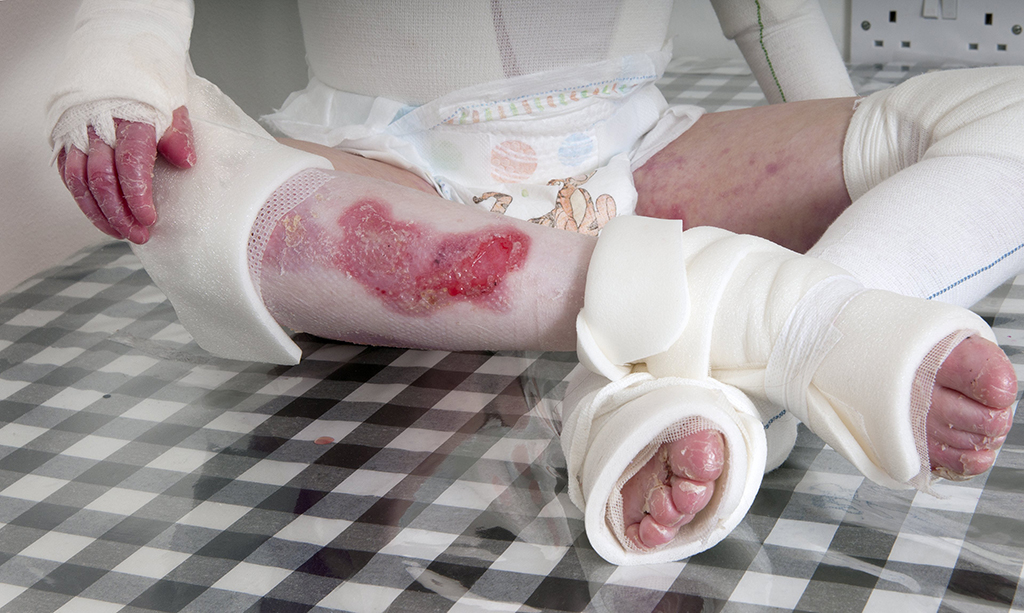
SCIENCE PHOTO LIBRARY
Quiz Summary
0 of 15 Questions completed
Questions:
Information
You have already completed the quiz before. Hence you can not start it again.
Quiz is loading...
You must sign in or sign up to start the quiz.
You must first complete the following:
Results
Results
0 of 15 Questions answered correctly
Your time:
Time has elapsed
You have reached 0 of 0 point(s), (0)
Earned Point(s): 0 of 0, (0)
0 Essay(s) Pending (Possible Point(s): 0)
Categories
- Not categorized 0%
- 1
- 2
- 3
- 4
- 5
- 6
- 7
- 8
- 9
- 10
- 11
- 12
- 13
- 14
- 15
- Current
- Review
- Answered
- Correct
- Incorrect
- Question 1 of 15
1. Question
Which of these images depicts hives (urticaria)?
CorrectIncorrect - Question 2 of 15
2. Question
Which virus causes slapped cheek syndrome?
CorrectIncorrect - Question 3 of 15
3. Question
Fill in the blanks using the following words: women, men, more, less, one-third, half
Studies have found that are three times more likely than to be diagnosed with hidradenitis suppurative in European and North America. It is common in people with darker skin pigmentation. There also appears to be a genetic link — family history is reported in around of patients.
CorrectIncorrect - Question 4 of 15
4. Question
Match the type of epidermolysis bullosa (EB) with its frequency:
Sort elements
- Accounts for around 70% of EB cases
- Accounts for around 20% of EB cases
- Accounts for around 10% of EB cases
- Worldwide, around 250 cases have been described since the condition was first identified
- Epidermolysis bullosa simplex
- Dystrophic epidermolysis bullosa
- Junctional epidermolysis bullosa
- Kindler syndrome
CorrectIncorrect - Question 5 of 15
5. Question
Match the antibiotic with its place in cellulitis therapy
Sort elements
- Flucloxacillin (five to seven days)
- Clarithromycin (five to seven days)
- Co-amoxiclav (seven days)
- Cefuroxime (seven days)
- First choice
- Alternative first choice
- First-choice antibiotic if infection is near the eyes or nose
- Alternative choice antibiotics for severe infection
CorrectIncorrect - Question 6 of 15
6. Question
Which skin infection is depicted in the image?
CorrectIncorrect - Question 7 of 15
7. Question
Which condition can be recognised by its characteristic 'bullseye' rash, shown in the image?
CorrectIncorrect - Question 8 of 15
8. Question
Which of the following points are not advised as self-care measures for children with chickenpox? More than one answer may be correct
CorrectIncorrect - Question 9 of 15
9. Question
Which of the following factors may cause delayed wound healing? More than one answer may be correct
CorrectIncorrect - Question 10 of 15
10. Question
What is the most commonly used treatment for keloid scars?
CorrectIncorrect - Question 11 of 15
11. Question
Fill in the blanks using three of the following options: first, second, immunological, biological, arthritis, fibromyalgia
The precise cause of psoriasis remains unclear, but it is likely that a combination of genetic, environmental and immunological factors is responsible. The condition is present up to 30% of -degree relatives of affected individuals. The immunological component of the condition was realised in the late 1980s, when patients with psoriatic were treated with the agent etanercept — a tumour necrosis factor (TNF)-alpha inhibitor.
CorrectIncorrect - Question 12 of 15
12. Question
What scale is used to describe skin according to its reaction to sun exposure?
CorrectIncorrect - Question 13 of 15
13. Question
A patient of Indian descent is looking for advice on dark brown patches that have appeared on their knuckles. The patient describes a history of preceding inflammation and itching on the affected site. What is the most likely diagnosis?
CorrectIncorrect - Question 14 of 15
14. Question
Which of the following age ranges would be eligible for the zoster vaccine, which protects against shingles?
CorrectIncorrect - Question 15 of 15
15. Question
Match the aciclovir regimen with its place in genital herpes therapy:
Sort elements
- 400mg three times a day for five days
- 200mg five times a day for five days
- 400mg three times a day for three to five days
- First episode
- Alternative regimen
- Recurrent episodes
CorrectIncorrect
Question 4 is from ‘Epidermolysis bullosa: recognition and management’. Please refer to the original article if you would like to learn more.
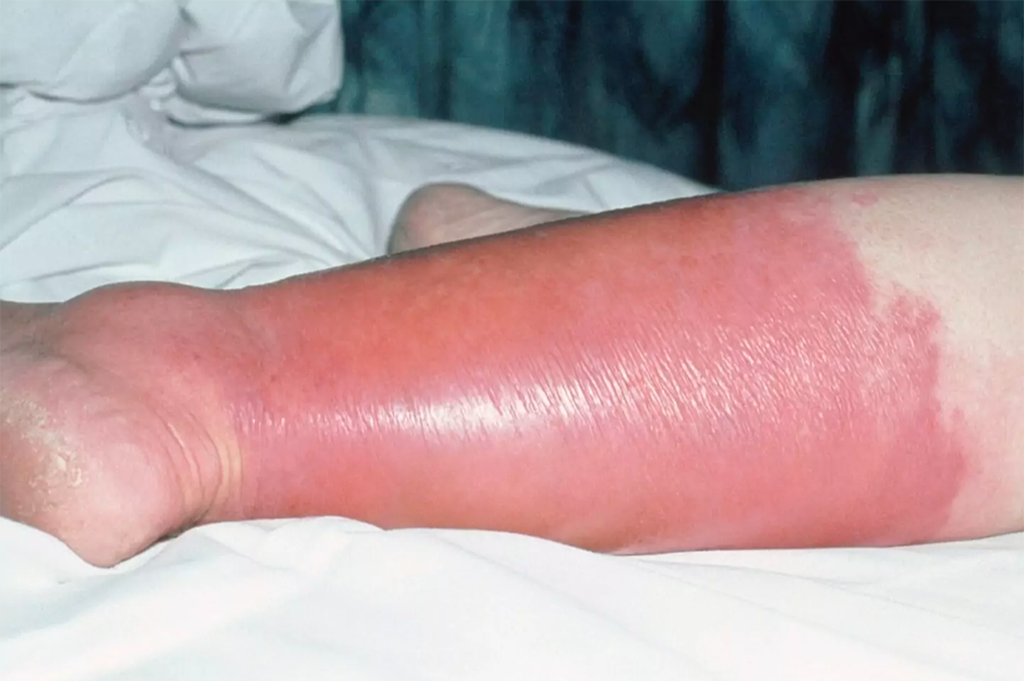
Science Photo Library
Quiz Summary
0 of 15 Questions completed
Questions:
Information
You have already completed the quiz before. Hence you can not start it again.
Quiz is loading...
You must sign in or sign up to start the quiz.
You must first complete the following:
Results
Results
0 of 15 Questions answered correctly
Your time:
Time has elapsed
You have reached 0 of 0 point(s), (0)
Earned Point(s): 0 of 0, (0)
0 Essay(s) Pending (Possible Point(s): 0)
Categories
- Not categorized 0%
- 1
- 2
- 3
- 4
- 5
- 6
- 7
- 8
- 9
- 10
- 11
- 12
- 13
- 14
- 15
- Current
- Review
- Answered
- Correct
- Incorrect
- Question 1 of 15
1. Question
Which of these images depicts hives (urticaria)?
CorrectIncorrect - Question 2 of 15
2. Question
Which virus causes slapped cheek syndrome?
CorrectIncorrect - Question 3 of 15
3. Question
Fill in the blanks using the following words: women, men, more, less, one-third, half
Studies have found that are three times more likely than to be diagnosed with hidradenitis suppurative in European and North America. It is common in people with darker skin pigmentation. There also appears to be a genetic link — family history is reported in around of patients.
CorrectIncorrect - Question 4 of 15
4. Question
Match the type of epidermolysis bullosa (EB) with its frequency:
Sort elements
- Accounts for around 70% of EB cases
- Accounts for around 20% of EB cases
- Accounts for around 10% of EB cases
- Worldwide, around 250 cases have been described since the condition was first identified
- Epidermolysis bullosa simplex
- Dystrophic epidermolysis bullosa
- Junctional epidermolysis bullosa
- Kindler syndrome
CorrectIncorrect - Question 5 of 15
5. Question
Match the antibiotic with its place in cellulitis therapy
Sort elements
- Flucloxacillin (five to seven days)
- Clarithromycin (five to seven days)
- Co-amoxiclav (seven days)
- Cefuroxime (seven days)
- First choice
- Alternative first choice
- First-choice antibiotic if infection is near the eyes or nose
- Alternative choice antibiotics for severe infection
CorrectIncorrect - Question 6 of 15
6. Question
Which skin infection is depicted in the image?
CorrectIncorrect - Question 7 of 15
7. Question
Which condition can be recognised by its characteristic 'bullseye' rash, shown in the image?
CorrectIncorrect - Question 8 of 15
8. Question
Which of the following points are not advised as self-care measures for children with chickenpox? More than one answer may be correct
CorrectIncorrect - Question 9 of 15
9. Question
Which of the following factors may cause delayed wound healing? More than one answer may be correct
CorrectIncorrect - Question 10 of 15
10. Question
What is the most commonly used treatment for keloid scars?
CorrectIncorrect - Question 11 of 15
11. Question
Fill in the blanks using three of the following options: first, second, immunological, biological, arthritis, fibromyalgia
The precise cause of psoriasis remains unclear, but it is likely that a combination of genetic, environmental and immunological factors is responsible. The condition is present up to 30% of -degree relatives of affected individuals. The immunological component of the condition was realised in the late 1980s, when patients with psoriatic were treated with the agent etanercept — a tumour necrosis factor (TNF)-alpha inhibitor.
CorrectIncorrect - Question 12 of 15
12. Question
What scale is used to describe skin according to its reaction to sun exposure?
CorrectIncorrect - Question 13 of 15
13. Question
A patient of Indian descent is looking for advice on dark brown patches that have appeared on their knuckles. The patient describes a history of preceding inflammation and itching on the affected site. What is the most likely diagnosis?
CorrectIncorrect - Question 14 of 15
14. Question
Which of the following age ranges would be eligible for the zoster vaccine, which protects against shingles?
CorrectIncorrect - Question 15 of 15
15. Question
Match the aciclovir regimen with its place in genital herpes therapy:
Sort elements
- 400mg three times a day for five days
- 200mg five times a day for five days
- 400mg three times a day for three to five days
- First episode
- Alternative regimen
- Recurrent episodes
CorrectIncorrect
Question 5 is from ‘Cellulitis: recognition and management’. Please refer to the original article if you would like to learn more.

DR P. MARAZZI/SCIENCE PHOTO LIBRARY (LEFT) AND GROOK DA OGER CC-BY-SA (RIGHT)
Quiz Summary
0 of 15 Questions completed
Questions:
Information
You have already completed the quiz before. Hence you can not start it again.
Quiz is loading...
You must sign in or sign up to start the quiz.
You must first complete the following:
Results
Results
0 of 15 Questions answered correctly
Your time:
Time has elapsed
You have reached 0 of 0 point(s), (0)
Earned Point(s): 0 of 0, (0)
0 Essay(s) Pending (Possible Point(s): 0)
Categories
- Not categorized 0%
- 1
- 2
- 3
- 4
- 5
- 6
- 7
- 8
- 9
- 10
- 11
- 12
- 13
- 14
- 15
- Current
- Review
- Answered
- Correct
- Incorrect
- Question 1 of 15
1. Question
Which of these images depicts hives (urticaria)?
CorrectIncorrect - Question 2 of 15
2. Question
Which virus causes slapped cheek syndrome?
CorrectIncorrect - Question 3 of 15
3. Question
Fill in the blanks using the following words: women, men, more, less, one-third, half
Studies have found that are three times more likely than to be diagnosed with hidradenitis suppurative in European and North America. It is common in people with darker skin pigmentation. There also appears to be a genetic link — family history is reported in around of patients.
CorrectIncorrect - Question 4 of 15
4. Question
Match the type of epidermolysis bullosa (EB) with its frequency:
Sort elements
- Accounts for around 70% of EB cases
- Accounts for around 20% of EB cases
- Accounts for around 10% of EB cases
- Worldwide, around 250 cases have been described since the condition was first identified
- Epidermolysis bullosa simplex
- Dystrophic epidermolysis bullosa
- Junctional epidermolysis bullosa
- Kindler syndrome
CorrectIncorrect - Question 5 of 15
5. Question
Match the antibiotic with its place in cellulitis therapy
Sort elements
- Flucloxacillin (five to seven days)
- Clarithromycin (five to seven days)
- Co-amoxiclav (seven days)
- Cefuroxime (seven days)
- First choice
- Alternative first choice
- First-choice antibiotic if infection is near the eyes or nose
- Alternative choice antibiotics for severe infection
CorrectIncorrect - Question 6 of 15
6. Question
Which skin infection is depicted in the image?
CorrectIncorrect - Question 7 of 15
7. Question
Which condition can be recognised by its characteristic 'bullseye' rash, shown in the image?
CorrectIncorrect - Question 8 of 15
8. Question
Which of the following points are not advised as self-care measures for children with chickenpox? More than one answer may be correct
CorrectIncorrect - Question 9 of 15
9. Question
Which of the following factors may cause delayed wound healing? More than one answer may be correct
CorrectIncorrect - Question 10 of 15
10. Question
What is the most commonly used treatment for keloid scars?
CorrectIncorrect - Question 11 of 15
11. Question
Fill in the blanks using three of the following options: first, second, immunological, biological, arthritis, fibromyalgia
The precise cause of psoriasis remains unclear, but it is likely that a combination of genetic, environmental and immunological factors is responsible. The condition is present up to 30% of -degree relatives of affected individuals. The immunological component of the condition was realised in the late 1980s, when patients with psoriatic were treated with the agent etanercept — a tumour necrosis factor (TNF)-alpha inhibitor.
CorrectIncorrect - Question 12 of 15
12. Question
What scale is used to describe skin according to its reaction to sun exposure?
CorrectIncorrect - Question 13 of 15
13. Question
A patient of Indian descent is looking for advice on dark brown patches that have appeared on their knuckles. The patient describes a history of preceding inflammation and itching on the affected site. What is the most likely diagnosis?
CorrectIncorrect - Question 14 of 15
14. Question
Which of the following age ranges would be eligible for the zoster vaccine, which protects against shingles?
CorrectIncorrect - Question 15 of 15
15. Question
Match the aciclovir regimen with its place in genital herpes therapy:
Sort elements
- 400mg three times a day for five days
- 200mg five times a day for five days
- 400mg three times a day for three to five days
- First episode
- Alternative regimen
- Recurrent episodes
CorrectIncorrect
Question 6 is from ‘Skin and soft tissue infections: risk factors and presentations’. Please refer to the original article if you would like to learn more.
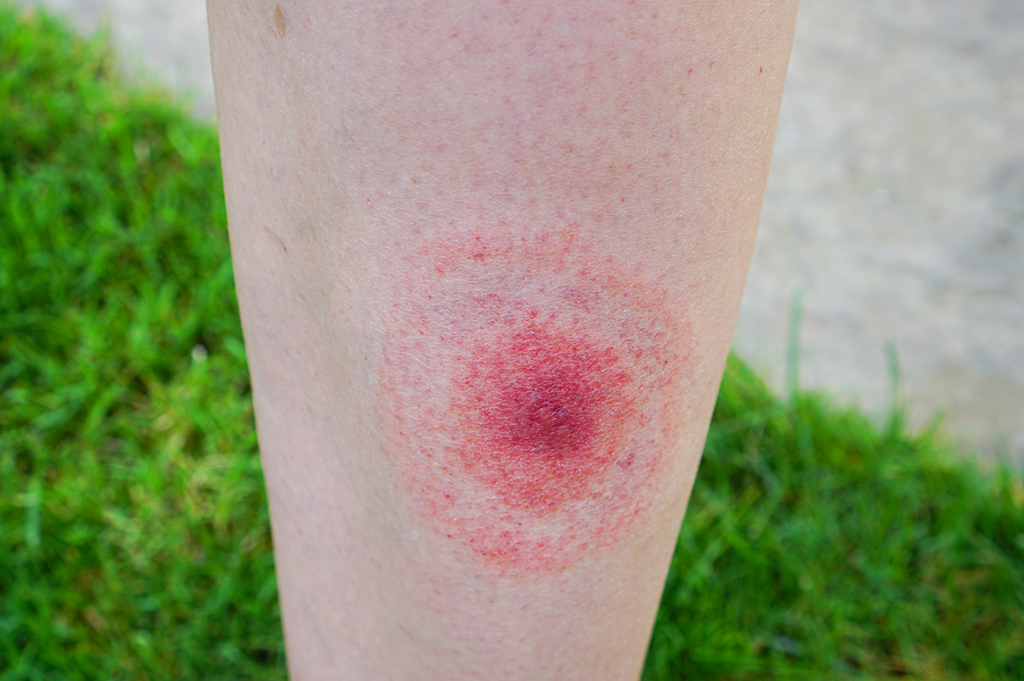
Shutterstock.com
Quiz Summary
0 of 15 Questions completed
Questions:
Information
You have already completed the quiz before. Hence you can not start it again.
Quiz is loading...
You must sign in or sign up to start the quiz.
You must first complete the following:
Results
Results
0 of 15 Questions answered correctly
Your time:
Time has elapsed
You have reached 0 of 0 point(s), (0)
Earned Point(s): 0 of 0, (0)
0 Essay(s) Pending (Possible Point(s): 0)
Categories
- Not categorized 0%
- 1
- 2
- 3
- 4
- 5
- 6
- 7
- 8
- 9
- 10
- 11
- 12
- 13
- 14
- 15
- Current
- Review
- Answered
- Correct
- Incorrect
- Question 1 of 15
1. Question
Which of these images depicts hives (urticaria)?
CorrectIncorrect - Question 2 of 15
2. Question
Which virus causes slapped cheek syndrome?
CorrectIncorrect - Question 3 of 15
3. Question
Fill in the blanks using the following words: women, men, more, less, one-third, half
Studies have found that are three times more likely than to be diagnosed with hidradenitis suppurative in European and North America. It is common in people with darker skin pigmentation. There also appears to be a genetic link — family history is reported in around of patients.
CorrectIncorrect - Question 4 of 15
4. Question
Match the type of epidermolysis bullosa (EB) with its frequency:
Sort elements
- Accounts for around 70% of EB cases
- Accounts for around 20% of EB cases
- Accounts for around 10% of EB cases
- Worldwide, around 250 cases have been described since the condition was first identified
- Epidermolysis bullosa simplex
- Dystrophic epidermolysis bullosa
- Junctional epidermolysis bullosa
- Kindler syndrome
CorrectIncorrect - Question 5 of 15
5. Question
Match the antibiotic with its place in cellulitis therapy
Sort elements
- Flucloxacillin (five to seven days)
- Clarithromycin (five to seven days)
- Co-amoxiclav (seven days)
- Cefuroxime (seven days)
- First choice
- Alternative first choice
- First-choice antibiotic if infection is near the eyes or nose
- Alternative choice antibiotics for severe infection
CorrectIncorrect - Question 6 of 15
6. Question
Which skin infection is depicted in the image?
CorrectIncorrect - Question 7 of 15
7. Question
Which condition can be recognised by its characteristic 'bullseye' rash, shown in the image?
CorrectIncorrect - Question 8 of 15
8. Question
Which of the following points are not advised as self-care measures for children with chickenpox? More than one answer may be correct
CorrectIncorrect - Question 9 of 15
9. Question
Which of the following factors may cause delayed wound healing? More than one answer may be correct
CorrectIncorrect - Question 10 of 15
10. Question
What is the most commonly used treatment for keloid scars?
CorrectIncorrect - Question 11 of 15
11. Question
Fill in the blanks using three of the following options: first, second, immunological, biological, arthritis, fibromyalgia
The precise cause of psoriasis remains unclear, but it is likely that a combination of genetic, environmental and immunological factors is responsible. The condition is present up to 30% of -degree relatives of affected individuals. The immunological component of the condition was realised in the late 1980s, when patients with psoriatic were treated with the agent etanercept — a tumour necrosis factor (TNF)-alpha inhibitor.
CorrectIncorrect - Question 12 of 15
12. Question
What scale is used to describe skin according to its reaction to sun exposure?
CorrectIncorrect - Question 13 of 15
13. Question
A patient of Indian descent is looking for advice on dark brown patches that have appeared on their knuckles. The patient describes a history of preceding inflammation and itching on the affected site. What is the most likely diagnosis?
CorrectIncorrect - Question 14 of 15
14. Question
Which of the following age ranges would be eligible for the zoster vaccine, which protects against shingles?
CorrectIncorrect - Question 15 of 15
15. Question
Match the aciclovir regimen with its place in genital herpes therapy:
Sort elements
- 400mg three times a day for five days
- 200mg five times a day for five days
- 400mg three times a day for three to five days
- First episode
- Alternative regimen
- Recurrent episodes
CorrectIncorrect
Question 7 is from ‘Case-based learning: insect bites and stings’. Please refer to the original article if you would like to learn more.
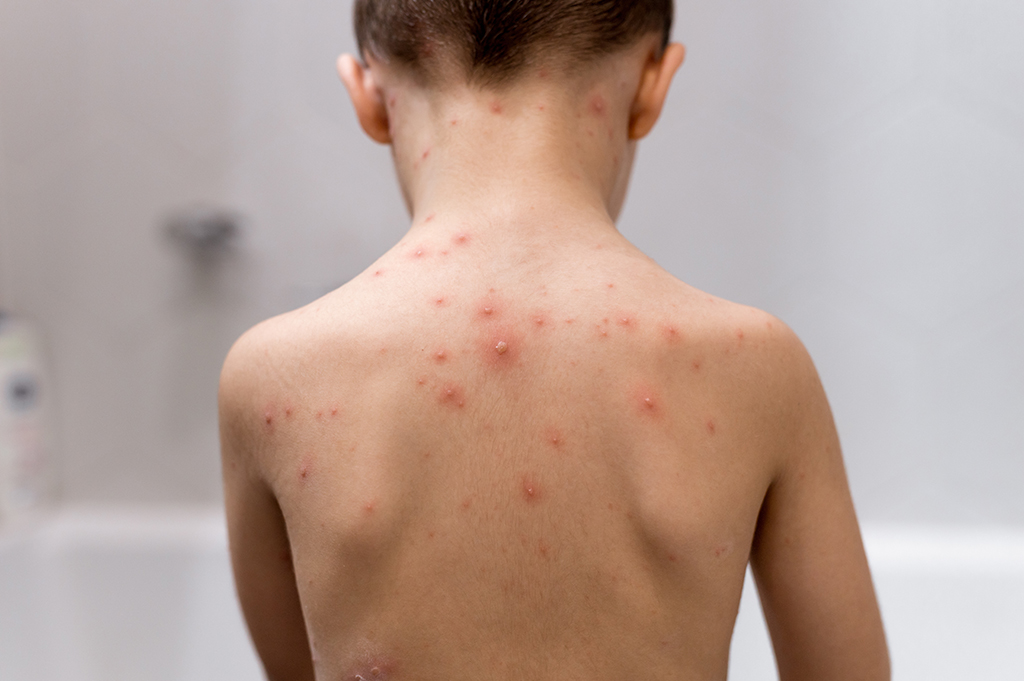
Shutterstock.com
Quiz Summary
0 of 15 Questions completed
Questions:
Information
You have already completed the quiz before. Hence you can not start it again.
Quiz is loading...
You must sign in or sign up to start the quiz.
You must first complete the following:
Results
Results
0 of 15 Questions answered correctly
Your time:
Time has elapsed
You have reached 0 of 0 point(s), (0)
Earned Point(s): 0 of 0, (0)
0 Essay(s) Pending (Possible Point(s): 0)
Categories
- Not categorized 0%
- 1
- 2
- 3
- 4
- 5
- 6
- 7
- 8
- 9
- 10
- 11
- 12
- 13
- 14
- 15
- Current
- Review
- Answered
- Correct
- Incorrect
- Question 1 of 15
1. Question
Which of these images depicts hives (urticaria)?
CorrectIncorrect - Question 2 of 15
2. Question
Which virus causes slapped cheek syndrome?
CorrectIncorrect - Question 3 of 15
3. Question
Fill in the blanks using the following words: women, men, more, less, one-third, half
Studies have found that are three times more likely than to be diagnosed with hidradenitis suppurative in European and North America. It is common in people with darker skin pigmentation. There also appears to be a genetic link — family history is reported in around of patients.
CorrectIncorrect - Question 4 of 15
4. Question
Match the type of epidermolysis bullosa (EB) with its frequency:
Sort elements
- Accounts for around 70% of EB cases
- Accounts for around 20% of EB cases
- Accounts for around 10% of EB cases
- Worldwide, around 250 cases have been described since the condition was first identified
- Epidermolysis bullosa simplex
- Dystrophic epidermolysis bullosa
- Junctional epidermolysis bullosa
- Kindler syndrome
CorrectIncorrect - Question 5 of 15
5. Question
Match the antibiotic with its place in cellulitis therapy
Sort elements
- Flucloxacillin (five to seven days)
- Clarithromycin (five to seven days)
- Co-amoxiclav (seven days)
- Cefuroxime (seven days)
- First choice
- Alternative first choice
- First-choice antibiotic if infection is near the eyes or nose
- Alternative choice antibiotics for severe infection
CorrectIncorrect - Question 6 of 15
6. Question
Which skin infection is depicted in the image?
CorrectIncorrect - Question 7 of 15
7. Question
Which condition can be recognised by its characteristic 'bullseye' rash, shown in the image?
CorrectIncorrect - Question 8 of 15
8. Question
Which of the following points are not advised as self-care measures for children with chickenpox? More than one answer may be correct
CorrectIncorrect - Question 9 of 15
9. Question
Which of the following factors may cause delayed wound healing? More than one answer may be correct
CorrectIncorrect - Question 10 of 15
10. Question
What is the most commonly used treatment for keloid scars?
CorrectIncorrect - Question 11 of 15
11. Question
Fill in the blanks using three of the following options: first, second, immunological, biological, arthritis, fibromyalgia
The precise cause of psoriasis remains unclear, but it is likely that a combination of genetic, environmental and immunological factors is responsible. The condition is present up to 30% of -degree relatives of affected individuals. The immunological component of the condition was realised in the late 1980s, when patients with psoriatic were treated with the agent etanercept — a tumour necrosis factor (TNF)-alpha inhibitor.
CorrectIncorrect - Question 12 of 15
12. Question
What scale is used to describe skin according to its reaction to sun exposure?
CorrectIncorrect - Question 13 of 15
13. Question
A patient of Indian descent is looking for advice on dark brown patches that have appeared on their knuckles. The patient describes a history of preceding inflammation and itching on the affected site. What is the most likely diagnosis?
CorrectIncorrect - Question 14 of 15
14. Question
Which of the following age ranges would be eligible for the zoster vaccine, which protects against shingles?
CorrectIncorrect - Question 15 of 15
15. Question
Match the aciclovir regimen with its place in genital herpes therapy:
Sort elements
- 400mg three times a day for five days
- 200mg five times a day for five days
- 400mg three times a day for three to five days
- First episode
- Alternative regimen
- Recurrent episodes
CorrectIncorrect
Question 8 is from ‘Chickenpox: symptoms, treatment and potential complications’. Please refer to the original article if you would like to learn more.
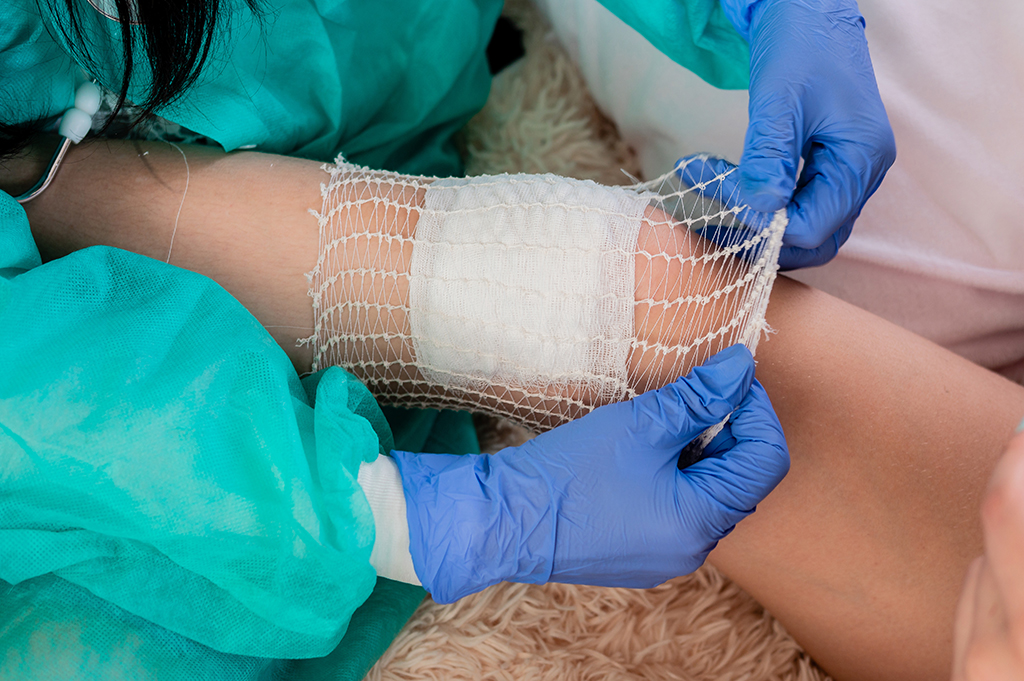
Shutterstock.com
Quiz Summary
0 of 15 Questions completed
Questions:
Information
You have already completed the quiz before. Hence you can not start it again.
Quiz is loading...
You must sign in or sign up to start the quiz.
You must first complete the following:
Results
Results
0 of 15 Questions answered correctly
Your time:
Time has elapsed
You have reached 0 of 0 point(s), (0)
Earned Point(s): 0 of 0, (0)
0 Essay(s) Pending (Possible Point(s): 0)
Categories
- Not categorized 0%
- 1
- 2
- 3
- 4
- 5
- 6
- 7
- 8
- 9
- 10
- 11
- 12
- 13
- 14
- 15
- Current
- Review
- Answered
- Correct
- Incorrect
- Question 1 of 15
1. Question
Which of these images depicts hives (urticaria)?
CorrectIncorrect - Question 2 of 15
2. Question
Which virus causes slapped cheek syndrome?
CorrectIncorrect - Question 3 of 15
3. Question
Fill in the blanks using the following words: women, men, more, less, one-third, half
Studies have found that are three times more likely than to be diagnosed with hidradenitis suppurative in European and North America. It is common in people with darker skin pigmentation. There also appears to be a genetic link — family history is reported in around of patients.
CorrectIncorrect - Question 4 of 15
4. Question
Match the type of epidermolysis bullosa (EB) with its frequency:
Sort elements
- Accounts for around 70% of EB cases
- Accounts for around 20% of EB cases
- Accounts for around 10% of EB cases
- Worldwide, around 250 cases have been described since the condition was first identified
- Epidermolysis bullosa simplex
- Dystrophic epidermolysis bullosa
- Junctional epidermolysis bullosa
- Kindler syndrome
CorrectIncorrect - Question 5 of 15
5. Question
Match the antibiotic with its place in cellulitis therapy
Sort elements
- Flucloxacillin (five to seven days)
- Clarithromycin (five to seven days)
- Co-amoxiclav (seven days)
- Cefuroxime (seven days)
- First choice
- Alternative first choice
- First-choice antibiotic if infection is near the eyes or nose
- Alternative choice antibiotics for severe infection
CorrectIncorrect - Question 6 of 15
6. Question
Which skin infection is depicted in the image?
CorrectIncorrect - Question 7 of 15
7. Question
Which condition can be recognised by its characteristic 'bullseye' rash, shown in the image?
CorrectIncorrect - Question 8 of 15
8. Question
Which of the following points are not advised as self-care measures for children with chickenpox? More than one answer may be correct
CorrectIncorrect - Question 9 of 15
9. Question
Which of the following factors may cause delayed wound healing? More than one answer may be correct
CorrectIncorrect - Question 10 of 15
10. Question
What is the most commonly used treatment for keloid scars?
CorrectIncorrect - Question 11 of 15
11. Question
Fill in the blanks using three of the following options: first, second, immunological, biological, arthritis, fibromyalgia
The precise cause of psoriasis remains unclear, but it is likely that a combination of genetic, environmental and immunological factors is responsible. The condition is present up to 30% of -degree relatives of affected individuals. The immunological component of the condition was realised in the late 1980s, when patients with psoriatic were treated with the agent etanercept — a tumour necrosis factor (TNF)-alpha inhibitor.
CorrectIncorrect - Question 12 of 15
12. Question
What scale is used to describe skin according to its reaction to sun exposure?
CorrectIncorrect - Question 13 of 15
13. Question
A patient of Indian descent is looking for advice on dark brown patches that have appeared on their knuckles. The patient describes a history of preceding inflammation and itching on the affected site. What is the most likely diagnosis?
CorrectIncorrect - Question 14 of 15
14. Question
Which of the following age ranges would be eligible for the zoster vaccine, which protects against shingles?
CorrectIncorrect - Question 15 of 15
15. Question
Match the aciclovir regimen with its place in genital herpes therapy:
Sort elements
- 400mg three times a day for five days
- 200mg five times a day for five days
- 400mg three times a day for three to five days
- First episode
- Alternative regimen
- Recurrent episodes
CorrectIncorrect
Question 9 is from ‘Current and advanced therapies for chronic wound infection’. Please refer to the original article if you would like to learn more.
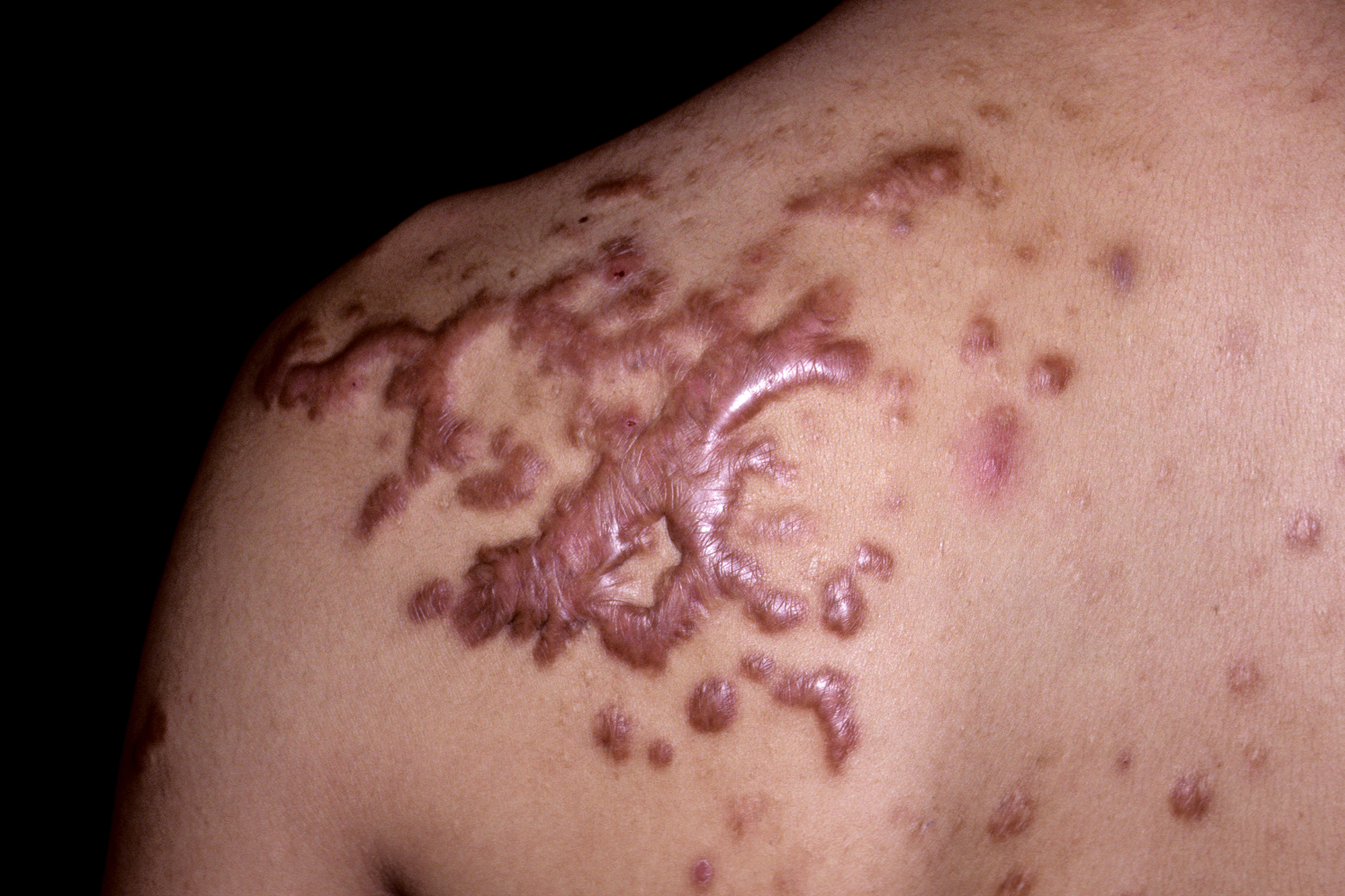
CID – ISM / SCIENCE PHOTO LIBRARY
Quiz Summary
0 of 15 Questions completed
Questions:
Information
You have already completed the quiz before. Hence you can not start it again.
Quiz is loading...
You must sign in or sign up to start the quiz.
You must first complete the following:
Results
Results
0 of 15 Questions answered correctly
Your time:
Time has elapsed
You have reached 0 of 0 point(s), (0)
Earned Point(s): 0 of 0, (0)
0 Essay(s) Pending (Possible Point(s): 0)
Categories
- Not categorized 0%
- 1
- 2
- 3
- 4
- 5
- 6
- 7
- 8
- 9
- 10
- 11
- 12
- 13
- 14
- 15
- Current
- Review
- Answered
- Correct
- Incorrect
- Question 1 of 15
1. Question
Which of these images depicts hives (urticaria)?
CorrectIncorrect - Question 2 of 15
2. Question
Which virus causes slapped cheek syndrome?
CorrectIncorrect - Question 3 of 15
3. Question
Fill in the blanks using the following words: women, men, more, less, one-third, half
Studies have found that are three times more likely than to be diagnosed with hidradenitis suppurative in European and North America. It is common in people with darker skin pigmentation. There also appears to be a genetic link — family history is reported in around of patients.
CorrectIncorrect - Question 4 of 15
4. Question
Match the type of epidermolysis bullosa (EB) with its frequency:
Sort elements
- Accounts for around 70% of EB cases
- Accounts for around 20% of EB cases
- Accounts for around 10% of EB cases
- Worldwide, around 250 cases have been described since the condition was first identified
- Epidermolysis bullosa simplex
- Dystrophic epidermolysis bullosa
- Junctional epidermolysis bullosa
- Kindler syndrome
CorrectIncorrect - Question 5 of 15
5. Question
Match the antibiotic with its place in cellulitis therapy
Sort elements
- Flucloxacillin (five to seven days)
- Clarithromycin (five to seven days)
- Co-amoxiclav (seven days)
- Cefuroxime (seven days)
- First choice
- Alternative first choice
- First-choice antibiotic if infection is near the eyes or nose
- Alternative choice antibiotics for severe infection
CorrectIncorrect - Question 6 of 15
6. Question
Which skin infection is depicted in the image?
CorrectIncorrect - Question 7 of 15
7. Question
Which condition can be recognised by its characteristic 'bullseye' rash, shown in the image?
CorrectIncorrect - Question 8 of 15
8. Question
Which of the following points are not advised as self-care measures for children with chickenpox? More than one answer may be correct
CorrectIncorrect - Question 9 of 15
9. Question
Which of the following factors may cause delayed wound healing? More than one answer may be correct
CorrectIncorrect - Question 10 of 15
10. Question
What is the most commonly used treatment for keloid scars?
CorrectIncorrect - Question 11 of 15
11. Question
Fill in the blanks using three of the following options: first, second, immunological, biological, arthritis, fibromyalgia
The precise cause of psoriasis remains unclear, but it is likely that a combination of genetic, environmental and immunological factors is responsible. The condition is present up to 30% of -degree relatives of affected individuals. The immunological component of the condition was realised in the late 1980s, when patients with psoriatic were treated with the agent etanercept — a tumour necrosis factor (TNF)-alpha inhibitor.
CorrectIncorrect - Question 12 of 15
12. Question
What scale is used to describe skin according to its reaction to sun exposure?
CorrectIncorrect - Question 13 of 15
13. Question
A patient of Indian descent is looking for advice on dark brown patches that have appeared on their knuckles. The patient describes a history of preceding inflammation and itching on the affected site. What is the most likely diagnosis?
CorrectIncorrect - Question 14 of 15
14. Question
Which of the following age ranges would be eligible for the zoster vaccine, which protects against shingles?
CorrectIncorrect - Question 15 of 15
15. Question
Match the aciclovir regimen with its place in genital herpes therapy:
Sort elements
- 400mg three times a day for five days
- 200mg five times a day for five days
- 400mg three times a day for three to five days
- First episode
- Alternative regimen
- Recurrent episodes
CorrectIncorrect
Question 10 is from ‘Keloid scars: recognition and management’. Please refer to the original article if you would like to learn more.
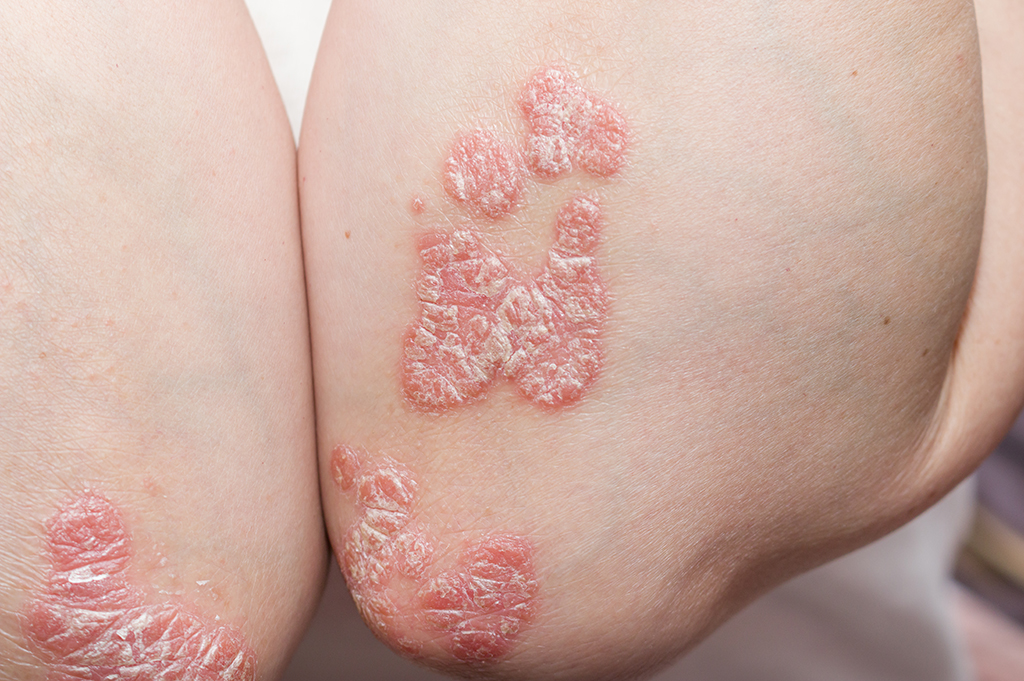
Shutterstock.com
Quiz Summary
0 of 15 Questions completed
Questions:
Information
You have already completed the quiz before. Hence you can not start it again.
Quiz is loading...
You must sign in or sign up to start the quiz.
You must first complete the following:
Results
Results
0 of 15 Questions answered correctly
Your time:
Time has elapsed
You have reached 0 of 0 point(s), (0)
Earned Point(s): 0 of 0, (0)
0 Essay(s) Pending (Possible Point(s): 0)
Categories
- Not categorized 0%
- 1
- 2
- 3
- 4
- 5
- 6
- 7
- 8
- 9
- 10
- 11
- 12
- 13
- 14
- 15
- Current
- Review
- Answered
- Correct
- Incorrect
- Question 1 of 15
1. Question
Which of these images depicts hives (urticaria)?
CorrectIncorrect - Question 2 of 15
2. Question
Which virus causes slapped cheek syndrome?
CorrectIncorrect - Question 3 of 15
3. Question
Fill in the blanks using the following words: women, men, more, less, one-third, half
Studies have found that are three times more likely than to be diagnosed with hidradenitis suppurative in European and North America. It is common in people with darker skin pigmentation. There also appears to be a genetic link — family history is reported in around of patients.
CorrectIncorrect - Question 4 of 15
4. Question
Match the type of epidermolysis bullosa (EB) with its frequency:
Sort elements
- Accounts for around 70% of EB cases
- Accounts for around 20% of EB cases
- Accounts for around 10% of EB cases
- Worldwide, around 250 cases have been described since the condition was first identified
- Epidermolysis bullosa simplex
- Dystrophic epidermolysis bullosa
- Junctional epidermolysis bullosa
- Kindler syndrome
CorrectIncorrect - Question 5 of 15
5. Question
Match the antibiotic with its place in cellulitis therapy
Sort elements
- Flucloxacillin (five to seven days)
- Clarithromycin (five to seven days)
- Co-amoxiclav (seven days)
- Cefuroxime (seven days)
- First choice
- Alternative first choice
- First-choice antibiotic if infection is near the eyes or nose
- Alternative choice antibiotics for severe infection
CorrectIncorrect - Question 6 of 15
6. Question
Which skin infection is depicted in the image?
CorrectIncorrect - Question 7 of 15
7. Question
Which condition can be recognised by its characteristic 'bullseye' rash, shown in the image?
CorrectIncorrect - Question 8 of 15
8. Question
Which of the following points are not advised as self-care measures for children with chickenpox? More than one answer may be correct
CorrectIncorrect - Question 9 of 15
9. Question
Which of the following factors may cause delayed wound healing? More than one answer may be correct
CorrectIncorrect - Question 10 of 15
10. Question
What is the most commonly used treatment for keloid scars?
CorrectIncorrect - Question 11 of 15
11. Question
Fill in the blanks using three of the following options: first, second, immunological, biological, arthritis, fibromyalgia
The precise cause of psoriasis remains unclear, but it is likely that a combination of genetic, environmental and immunological factors is responsible. The condition is present up to 30% of -degree relatives of affected individuals. The immunological component of the condition was realised in the late 1980s, when patients with psoriatic were treated with the agent etanercept — a tumour necrosis factor (TNF)-alpha inhibitor.
CorrectIncorrect - Question 12 of 15
12. Question
What scale is used to describe skin according to its reaction to sun exposure?
CorrectIncorrect - Question 13 of 15
13. Question
A patient of Indian descent is looking for advice on dark brown patches that have appeared on their knuckles. The patient describes a history of preceding inflammation and itching on the affected site. What is the most likely diagnosis?
CorrectIncorrect - Question 14 of 15
14. Question
Which of the following age ranges would be eligible for the zoster vaccine, which protects against shingles?
CorrectIncorrect - Question 15 of 15
15. Question
Match the aciclovir regimen with its place in genital herpes therapy:
Sort elements
- 400mg three times a day for five days
- 200mg five times a day for five days
- 400mg three times a day for three to five days
- First episode
- Alternative regimen
- Recurrent episodes
CorrectIncorrect
Question 11 is from ‘Case-based learning: psoriasis management in community pharmacy’. Please refer to the original article if you would like to learn more.
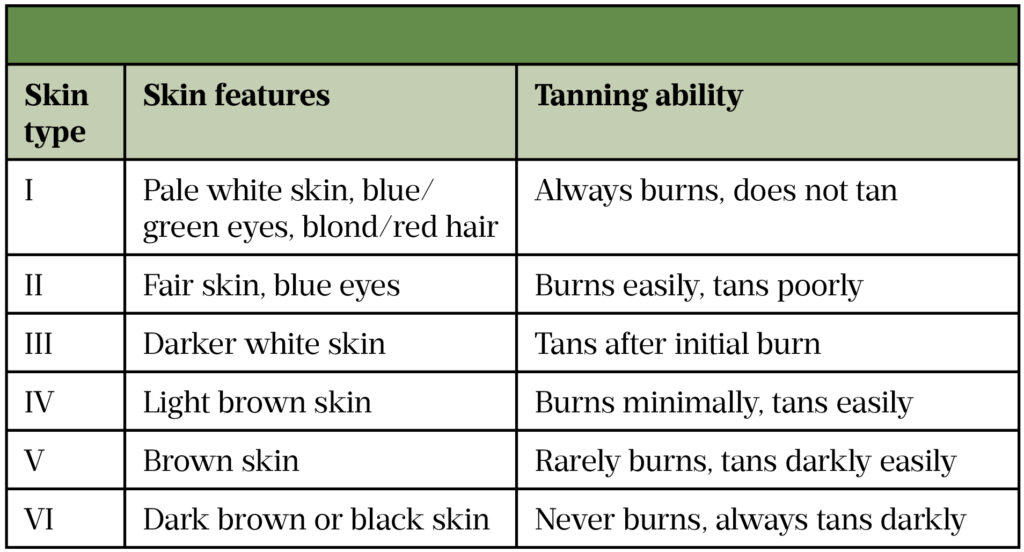
Quiz Summary
0 of 15 Questions completed
Questions:
Information
You have already completed the quiz before. Hence you can not start it again.
Quiz is loading...
You must sign in or sign up to start the quiz.
You must first complete the following:
Results
Results
0 of 15 Questions answered correctly
Your time:
Time has elapsed
You have reached 0 of 0 point(s), (0)
Earned Point(s): 0 of 0, (0)
0 Essay(s) Pending (Possible Point(s): 0)
Categories
- Not categorized 0%
- 1
- 2
- 3
- 4
- 5
- 6
- 7
- 8
- 9
- 10
- 11
- 12
- 13
- 14
- 15
- Current
- Review
- Answered
- Correct
- Incorrect
- Question 1 of 15
1. Question
Which of these images depicts hives (urticaria)?
CorrectIncorrect - Question 2 of 15
2. Question
Which virus causes slapped cheek syndrome?
CorrectIncorrect - Question 3 of 15
3. Question
Fill in the blanks using the following words: women, men, more, less, one-third, half
Studies have found that are three times more likely than to be diagnosed with hidradenitis suppurative in European and North America. It is common in people with darker skin pigmentation. There also appears to be a genetic link — family history is reported in around of patients.
CorrectIncorrect - Question 4 of 15
4. Question
Match the type of epidermolysis bullosa (EB) with its frequency:
Sort elements
- Accounts for around 70% of EB cases
- Accounts for around 20% of EB cases
- Accounts for around 10% of EB cases
- Worldwide, around 250 cases have been described since the condition was first identified
- Epidermolysis bullosa simplex
- Dystrophic epidermolysis bullosa
- Junctional epidermolysis bullosa
- Kindler syndrome
CorrectIncorrect - Question 5 of 15
5. Question
Match the antibiotic with its place in cellulitis therapy
Sort elements
- Flucloxacillin (five to seven days)
- Clarithromycin (five to seven days)
- Co-amoxiclav (seven days)
- Cefuroxime (seven days)
- First choice
- Alternative first choice
- First-choice antibiotic if infection is near the eyes or nose
- Alternative choice antibiotics for severe infection
CorrectIncorrect - Question 6 of 15
6. Question
Which skin infection is depicted in the image?
CorrectIncorrect - Question 7 of 15
7. Question
Which condition can be recognised by its characteristic 'bullseye' rash, shown in the image?
CorrectIncorrect - Question 8 of 15
8. Question
Which of the following points are not advised as self-care measures for children with chickenpox? More than one answer may be correct
CorrectIncorrect - Question 9 of 15
9. Question
Which of the following factors may cause delayed wound healing? More than one answer may be correct
CorrectIncorrect - Question 10 of 15
10. Question
What is the most commonly used treatment for keloid scars?
CorrectIncorrect - Question 11 of 15
11. Question
Fill in the blanks using three of the following options: first, second, immunological, biological, arthritis, fibromyalgia
The precise cause of psoriasis remains unclear, but it is likely that a combination of genetic, environmental and immunological factors is responsible. The condition is present up to 30% of -degree relatives of affected individuals. The immunological component of the condition was realised in the late 1980s, when patients with psoriatic were treated with the agent etanercept — a tumour necrosis factor (TNF)-alpha inhibitor.
CorrectIncorrect - Question 12 of 15
12. Question
What scale is used to describe skin according to its reaction to sun exposure?
CorrectIncorrect - Question 13 of 15
13. Question
A patient of Indian descent is looking for advice on dark brown patches that have appeared on their knuckles. The patient describes a history of preceding inflammation and itching on the affected site. What is the most likely diagnosis?
CorrectIncorrect - Question 14 of 15
14. Question
Which of the following age ranges would be eligible for the zoster vaccine, which protects against shingles?
CorrectIncorrect - Question 15 of 15
15. Question
Match the aciclovir regimen with its place in genital herpes therapy:
Sort elements
- 400mg three times a day for five days
- 200mg five times a day for five days
- 400mg three times a day for three to five days
- First episode
- Alternative regimen
- Recurrent episodes
CorrectIncorrect
Question 12 is from ‘Recognising common skin conditions in people of colour’. Please refer to the original article if you would like to learn more.
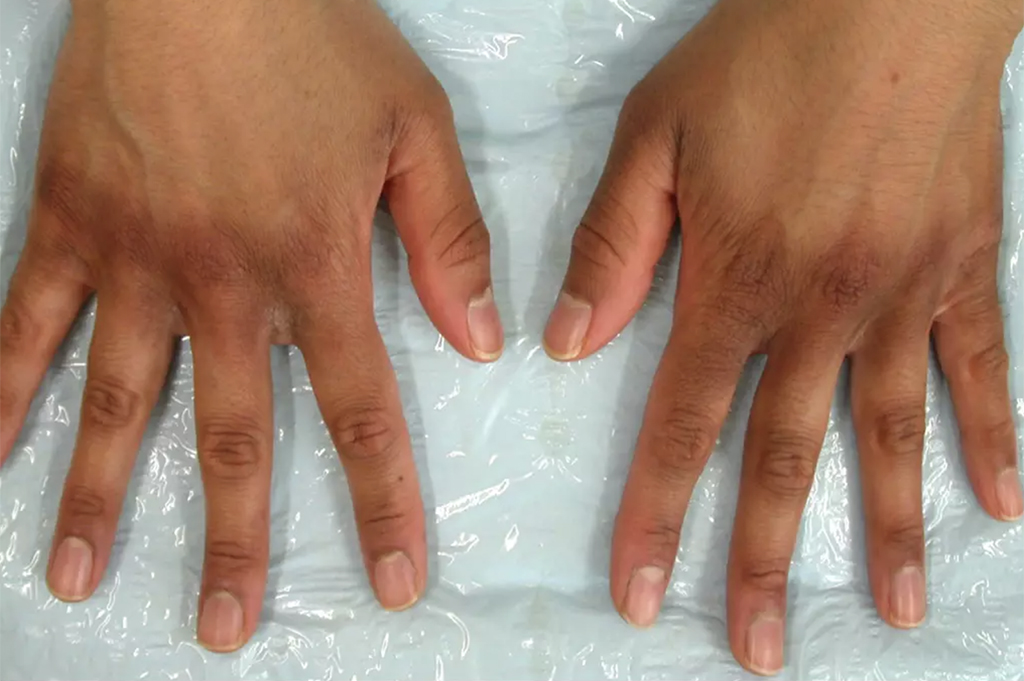
Dermnet New Zealand
Quiz Summary
0 of 15 Questions completed
Questions:
Information
You have already completed the quiz before. Hence you can not start it again.
Quiz is loading...
You must sign in or sign up to start the quiz.
You must first complete the following:
Results
Results
0 of 15 Questions answered correctly
Your time:
Time has elapsed
You have reached 0 of 0 point(s), (0)
Earned Point(s): 0 of 0, (0)
0 Essay(s) Pending (Possible Point(s): 0)
Categories
- Not categorized 0%
- 1
- 2
- 3
- 4
- 5
- 6
- 7
- 8
- 9
- 10
- 11
- 12
- 13
- 14
- 15
- Current
- Review
- Answered
- Correct
- Incorrect
- Question 1 of 15
1. Question
Which of these images depicts hives (urticaria)?
CorrectIncorrect - Question 2 of 15
2. Question
Which virus causes slapped cheek syndrome?
CorrectIncorrect - Question 3 of 15
3. Question
Fill in the blanks using the following words: women, men, more, less, one-third, half
Studies have found that are three times more likely than to be diagnosed with hidradenitis suppurative in European and North America. It is common in people with darker skin pigmentation. There also appears to be a genetic link — family history is reported in around of patients.
CorrectIncorrect - Question 4 of 15
4. Question
Match the type of epidermolysis bullosa (EB) with its frequency:
Sort elements
- Accounts for around 70% of EB cases
- Accounts for around 20% of EB cases
- Accounts for around 10% of EB cases
- Worldwide, around 250 cases have been described since the condition was first identified
- Epidermolysis bullosa simplex
- Dystrophic epidermolysis bullosa
- Junctional epidermolysis bullosa
- Kindler syndrome
CorrectIncorrect - Question 5 of 15
5. Question
Match the antibiotic with its place in cellulitis therapy
Sort elements
- Flucloxacillin (five to seven days)
- Clarithromycin (five to seven days)
- Co-amoxiclav (seven days)
- Cefuroxime (seven days)
- First choice
- Alternative first choice
- First-choice antibiotic if infection is near the eyes or nose
- Alternative choice antibiotics for severe infection
CorrectIncorrect - Question 6 of 15
6. Question
Which skin infection is depicted in the image?
CorrectIncorrect - Question 7 of 15
7. Question
Which condition can be recognised by its characteristic 'bullseye' rash, shown in the image?
CorrectIncorrect - Question 8 of 15
8. Question
Which of the following points are not advised as self-care measures for children with chickenpox? More than one answer may be correct
CorrectIncorrect - Question 9 of 15
9. Question
Which of the following factors may cause delayed wound healing? More than one answer may be correct
CorrectIncorrect - Question 10 of 15
10. Question
What is the most commonly used treatment for keloid scars?
CorrectIncorrect - Question 11 of 15
11. Question
Fill in the blanks using three of the following options: first, second, immunological, biological, arthritis, fibromyalgia
The precise cause of psoriasis remains unclear, but it is likely that a combination of genetic, environmental and immunological factors is responsible. The condition is present up to 30% of -degree relatives of affected individuals. The immunological component of the condition was realised in the late 1980s, when patients with psoriatic were treated with the agent etanercept — a tumour necrosis factor (TNF)-alpha inhibitor.
CorrectIncorrect - Question 12 of 15
12. Question
What scale is used to describe skin according to its reaction to sun exposure?
CorrectIncorrect - Question 13 of 15
13. Question
A patient of Indian descent is looking for advice on dark brown patches that have appeared on their knuckles. The patient describes a history of preceding inflammation and itching on the affected site. What is the most likely diagnosis?
CorrectIncorrect - Question 14 of 15
14. Question
Which of the following age ranges would be eligible for the zoster vaccine, which protects against shingles?
CorrectIncorrect - Question 15 of 15
15. Question
Match the aciclovir regimen with its place in genital herpes therapy:
Sort elements
- 400mg three times a day for five days
- 200mg five times a day for five days
- 400mg three times a day for three to five days
- First episode
- Alternative regimen
- Recurrent episodes
CorrectIncorrect
Question 13 is from ‘Common dermatological conditions in skin of colour’ Please refer to the original article if you would like to learn more.
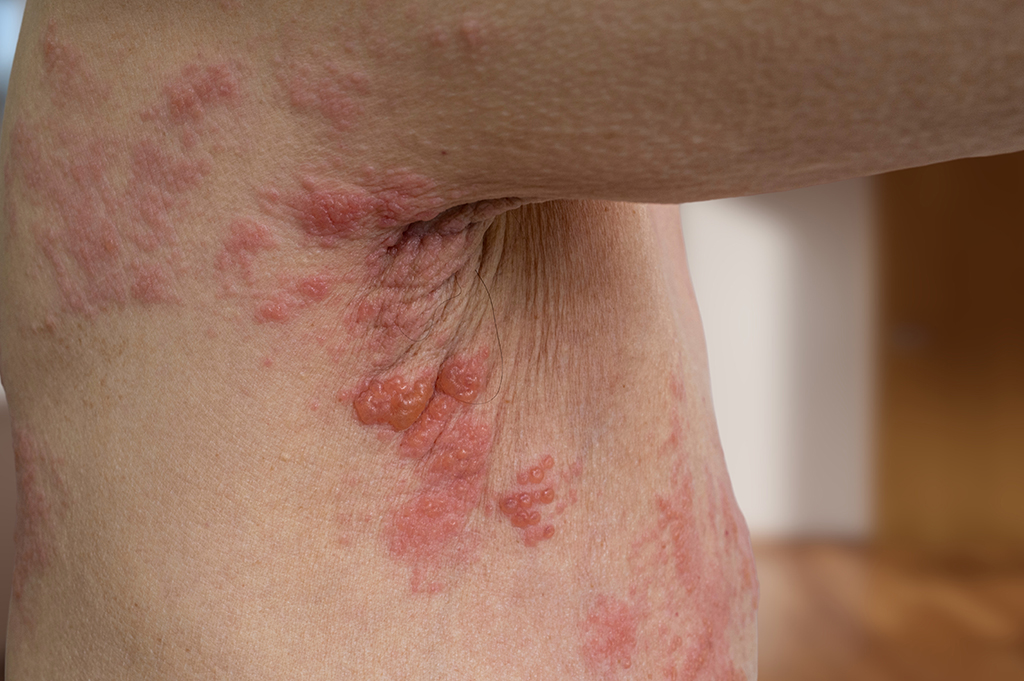
Shutterstock.com
Quiz Summary
0 of 15 Questions completed
Questions:
Information
You have already completed the quiz before. Hence you can not start it again.
Quiz is loading...
You must sign in or sign up to start the quiz.
You must first complete the following:
Results
Results
0 of 15 Questions answered correctly
Your time:
Time has elapsed
You have reached 0 of 0 point(s), (0)
Earned Point(s): 0 of 0, (0)
0 Essay(s) Pending (Possible Point(s): 0)
Categories
- Not categorized 0%
- 1
- 2
- 3
- 4
- 5
- 6
- 7
- 8
- 9
- 10
- 11
- 12
- 13
- 14
- 15
- Current
- Review
- Answered
- Correct
- Incorrect
- Question 1 of 15
1. Question
Which of these images depicts hives (urticaria)?
CorrectIncorrect - Question 2 of 15
2. Question
Which virus causes slapped cheek syndrome?
CorrectIncorrect - Question 3 of 15
3. Question
Fill in the blanks using the following words: women, men, more, less, one-third, half
Studies have found that are three times more likely than to be diagnosed with hidradenitis suppurative in European and North America. It is common in people with darker skin pigmentation. There also appears to be a genetic link — family history is reported in around of patients.
CorrectIncorrect - Question 4 of 15
4. Question
Match the type of epidermolysis bullosa (EB) with its frequency:
Sort elements
- Accounts for around 70% of EB cases
- Accounts for around 20% of EB cases
- Accounts for around 10% of EB cases
- Worldwide, around 250 cases have been described since the condition was first identified
- Epidermolysis bullosa simplex
- Dystrophic epidermolysis bullosa
- Junctional epidermolysis bullosa
- Kindler syndrome
CorrectIncorrect - Question 5 of 15
5. Question
Match the antibiotic with its place in cellulitis therapy
Sort elements
- Flucloxacillin (five to seven days)
- Clarithromycin (five to seven days)
- Co-amoxiclav (seven days)
- Cefuroxime (seven days)
- First choice
- Alternative first choice
- First-choice antibiotic if infection is near the eyes or nose
- Alternative choice antibiotics for severe infection
CorrectIncorrect - Question 6 of 15
6. Question
Which skin infection is depicted in the image?
CorrectIncorrect - Question 7 of 15
7. Question
Which condition can be recognised by its characteristic 'bullseye' rash, shown in the image?
CorrectIncorrect - Question 8 of 15
8. Question
Which of the following points are not advised as self-care measures for children with chickenpox? More than one answer may be correct
CorrectIncorrect - Question 9 of 15
9. Question
Which of the following factors may cause delayed wound healing? More than one answer may be correct
CorrectIncorrect - Question 10 of 15
10. Question
What is the most commonly used treatment for keloid scars?
CorrectIncorrect - Question 11 of 15
11. Question
Fill in the blanks using three of the following options: first, second, immunological, biological, arthritis, fibromyalgia
The precise cause of psoriasis remains unclear, but it is likely that a combination of genetic, environmental and immunological factors is responsible. The condition is present up to 30% of -degree relatives of affected individuals. The immunological component of the condition was realised in the late 1980s, when patients with psoriatic were treated with the agent etanercept — a tumour necrosis factor (TNF)-alpha inhibitor.
CorrectIncorrect - Question 12 of 15
12. Question
What scale is used to describe skin according to its reaction to sun exposure?
CorrectIncorrect - Question 13 of 15
13. Question
A patient of Indian descent is looking for advice on dark brown patches that have appeared on their knuckles. The patient describes a history of preceding inflammation and itching on the affected site. What is the most likely diagnosis?
CorrectIncorrect - Question 14 of 15
14. Question
Which of the following age ranges would be eligible for the zoster vaccine, which protects against shingles?
CorrectIncorrect - Question 15 of 15
15. Question
Match the aciclovir regimen with its place in genital herpes therapy:
Sort elements
- 400mg three times a day for five days
- 200mg five times a day for five days
- 400mg three times a day for three to five days
- First episode
- Alternative regimen
- Recurrent episodes
CorrectIncorrect
Question 14 is from ‘Case-based learning: shingles’ Please refer to the original article if you would like to learn more.
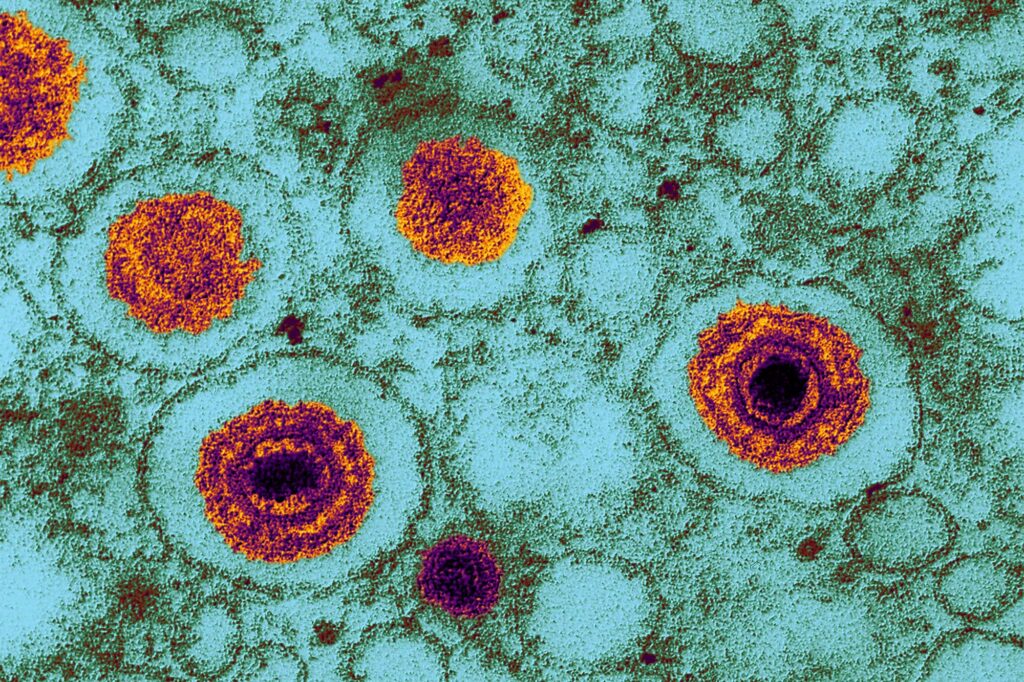
DR KLAUS BOLLER/SCIENCE PHOTO LIBRARY
Quiz Summary
0 of 15 Questions completed
Questions:
Information
You have already completed the quiz before. Hence you can not start it again.
Quiz is loading...
You must sign in or sign up to start the quiz.
You must first complete the following:
Results
Results
0 of 15 Questions answered correctly
Your time:
Time has elapsed
You have reached 0 of 0 point(s), (0)
Earned Point(s): 0 of 0, (0)
0 Essay(s) Pending (Possible Point(s): 0)
Categories
- Not categorized 0%
- 1
- 2
- 3
- 4
- 5
- 6
- 7
- 8
- 9
- 10
- 11
- 12
- 13
- 14
- 15
- Current
- Review
- Answered
- Correct
- Incorrect
- Question 1 of 15
1. Question
Which of these images depicts hives (urticaria)?
CorrectIncorrect - Question 2 of 15
2. Question
Which virus causes slapped cheek syndrome?
CorrectIncorrect - Question 3 of 15
3. Question
Fill in the blanks using the following words: women, men, more, less, one-third, half
Studies have found that are three times more likely than to be diagnosed with hidradenitis suppurative in European and North America. It is common in people with darker skin pigmentation. There also appears to be a genetic link — family history is reported in around of patients.
CorrectIncorrect - Question 4 of 15
4. Question
Match the type of epidermolysis bullosa (EB) with its frequency:
Sort elements
- Accounts for around 70% of EB cases
- Accounts for around 20% of EB cases
- Accounts for around 10% of EB cases
- Worldwide, around 250 cases have been described since the condition was first identified
- Epidermolysis bullosa simplex
- Dystrophic epidermolysis bullosa
- Junctional epidermolysis bullosa
- Kindler syndrome
CorrectIncorrect - Question 5 of 15
5. Question
Match the antibiotic with its place in cellulitis therapy
Sort elements
- Flucloxacillin (five to seven days)
- Clarithromycin (five to seven days)
- Co-amoxiclav (seven days)
- Cefuroxime (seven days)
- First choice
- Alternative first choice
- First-choice antibiotic if infection is near the eyes or nose
- Alternative choice antibiotics for severe infection
CorrectIncorrect - Question 6 of 15
6. Question
Which skin infection is depicted in the image?
CorrectIncorrect - Question 7 of 15
7. Question
Which condition can be recognised by its characteristic 'bullseye' rash, shown in the image?
CorrectIncorrect - Question 8 of 15
8. Question
Which of the following points are not advised as self-care measures for children with chickenpox? More than one answer may be correct
CorrectIncorrect - Question 9 of 15
9. Question
Which of the following factors may cause delayed wound healing? More than one answer may be correct
CorrectIncorrect - Question 10 of 15
10. Question
What is the most commonly used treatment for keloid scars?
CorrectIncorrect - Question 11 of 15
11. Question
Fill in the blanks using three of the following options: first, second, immunological, biological, arthritis, fibromyalgia
The precise cause of psoriasis remains unclear, but it is likely that a combination of genetic, environmental and immunological factors is responsible. The condition is present up to 30% of -degree relatives of affected individuals. The immunological component of the condition was realised in the late 1980s, when patients with psoriatic were treated with the agent etanercept — a tumour necrosis factor (TNF)-alpha inhibitor.
CorrectIncorrect - Question 12 of 15
12. Question
What scale is used to describe skin according to its reaction to sun exposure?
CorrectIncorrect - Question 13 of 15
13. Question
A patient of Indian descent is looking for advice on dark brown patches that have appeared on their knuckles. The patient describes a history of preceding inflammation and itching on the affected site. What is the most likely diagnosis?
CorrectIncorrect - Question 14 of 15
14. Question
Which of the following age ranges would be eligible for the zoster vaccine, which protects against shingles?
CorrectIncorrect - Question 15 of 15
15. Question
Match the aciclovir regimen with its place in genital herpes therapy:
Sort elements
- 400mg three times a day for five days
- 200mg five times a day for five days
- 400mg three times a day for three to five days
- First episode
- Alternative regimen
- Recurrent episodes
CorrectIncorrect
Question 15 is from ‘Genital herpes: diagnosis and treatment’. Please refer to the original article if you would like to learn more.
Quiz Summary
0 of 15 Questions completed
Questions:
Information
You have already completed the quiz before. Hence you can not start it again.
Quiz is loading...
You must sign in or sign up to start the quiz.
You must first complete the following:
Results
Results
0 of 15 Questions answered correctly
Your time:
Time has elapsed
You have reached 0 of 0 point(s), (0)
Earned Point(s): 0 of 0, (0)
0 Essay(s) Pending (Possible Point(s): 0)
Categories
- Not categorized 0%
- 1
- 2
- 3
- 4
- 5
- 6
- 7
- 8
- 9
- 10
- 11
- 12
- 13
- 14
- 15
- Current
- Review
- Answered
- Correct
- Incorrect
- Question 1 of 15
1. Question
Which of these images depicts hives (urticaria)?
CorrectIncorrect - Question 2 of 15
2. Question
Which virus causes slapped cheek syndrome?
CorrectIncorrect - Question 3 of 15
3. Question
Fill in the blanks using the following words: women, men, more, less, one-third, half
Studies have found that are three times more likely than to be diagnosed with hidradenitis suppurative in European and North America. It is common in people with darker skin pigmentation. There also appears to be a genetic link — family history is reported in around of patients.
CorrectIncorrect - Question 4 of 15
4. Question
Match the type of epidermolysis bullosa (EB) with its frequency:
Sort elements
- Accounts for around 70% of EB cases
- Accounts for around 20% of EB cases
- Accounts for around 10% of EB cases
- Worldwide, around 250 cases have been described since the condition was first identified
- Epidermolysis bullosa simplex
- Dystrophic epidermolysis bullosa
- Junctional epidermolysis bullosa
- Kindler syndrome
CorrectIncorrect - Question 5 of 15
5. Question
Match the antibiotic with its place in cellulitis therapy
Sort elements
- Flucloxacillin (five to seven days)
- Clarithromycin (five to seven days)
- Co-amoxiclav (seven days)
- Cefuroxime (seven days)
- First choice
- Alternative first choice
- First-choice antibiotic if infection is near the eyes or nose
- Alternative choice antibiotics for severe infection
CorrectIncorrect - Question 6 of 15
6. Question
Which skin infection is depicted in the image?
CorrectIncorrect - Question 7 of 15
7. Question
Which condition can be recognised by its characteristic 'bullseye' rash, shown in the image?
CorrectIncorrect - Question 8 of 15
8. Question
Which of the following points are not advised as self-care measures for children with chickenpox? More than one answer may be correct
CorrectIncorrect - Question 9 of 15
9. Question
Which of the following factors may cause delayed wound healing? More than one answer may be correct
CorrectIncorrect - Question 10 of 15
10. Question
What is the most commonly used treatment for keloid scars?
CorrectIncorrect - Question 11 of 15
11. Question
Fill in the blanks using three of the following options: first, second, immunological, biological, arthritis, fibromyalgia
The precise cause of psoriasis remains unclear, but it is likely that a combination of genetic, environmental and immunological factors is responsible. The condition is present up to 30% of -degree relatives of affected individuals. The immunological component of the condition was realised in the late 1980s, when patients with psoriatic were treated with the agent etanercept — a tumour necrosis factor (TNF)-alpha inhibitor.
CorrectIncorrect - Question 12 of 15
12. Question
What scale is used to describe skin according to its reaction to sun exposure?
CorrectIncorrect - Question 13 of 15
13. Question
A patient of Indian descent is looking for advice on dark brown patches that have appeared on their knuckles. The patient describes a history of preceding inflammation and itching on the affected site. What is the most likely diagnosis?
CorrectIncorrect - Question 14 of 15
14. Question
Which of the following age ranges would be eligible for the zoster vaccine, which protects against shingles?
CorrectIncorrect - Question 15 of 15
15. Question
Match the aciclovir regimen with its place in genital herpes therapy:
Sort elements
- 400mg three times a day for five days
- 200mg five times a day for five days
- 400mg three times a day for three to five days
- First episode
- Alternative regimen
- Recurrent episodes
CorrectIncorrect
- Citation
- The Pharmaceutical Journal, PJ, May 2025, Vol 314, No 7997;314(7997)::DOI:10.1211/PJ.2025.1.356630
